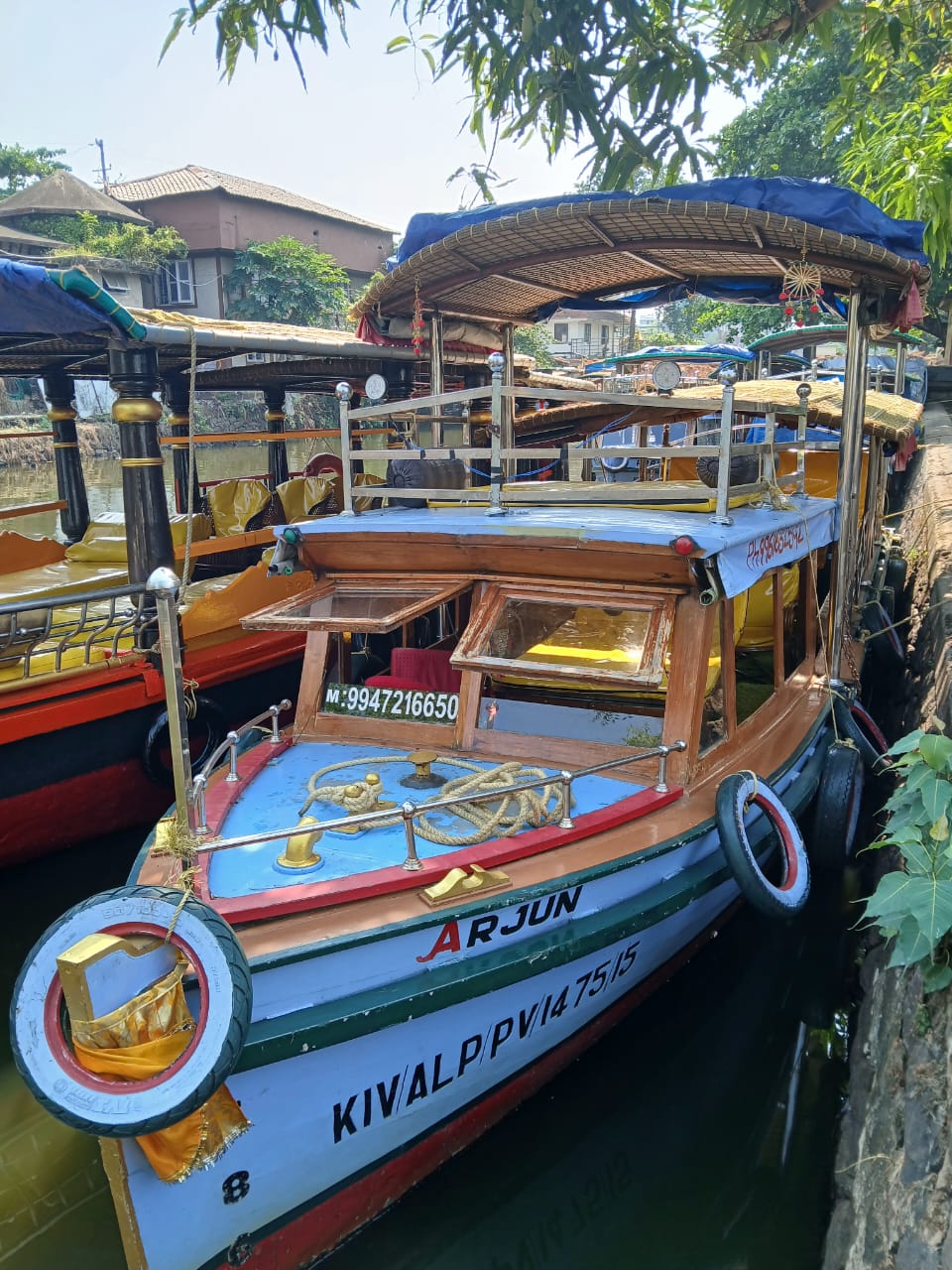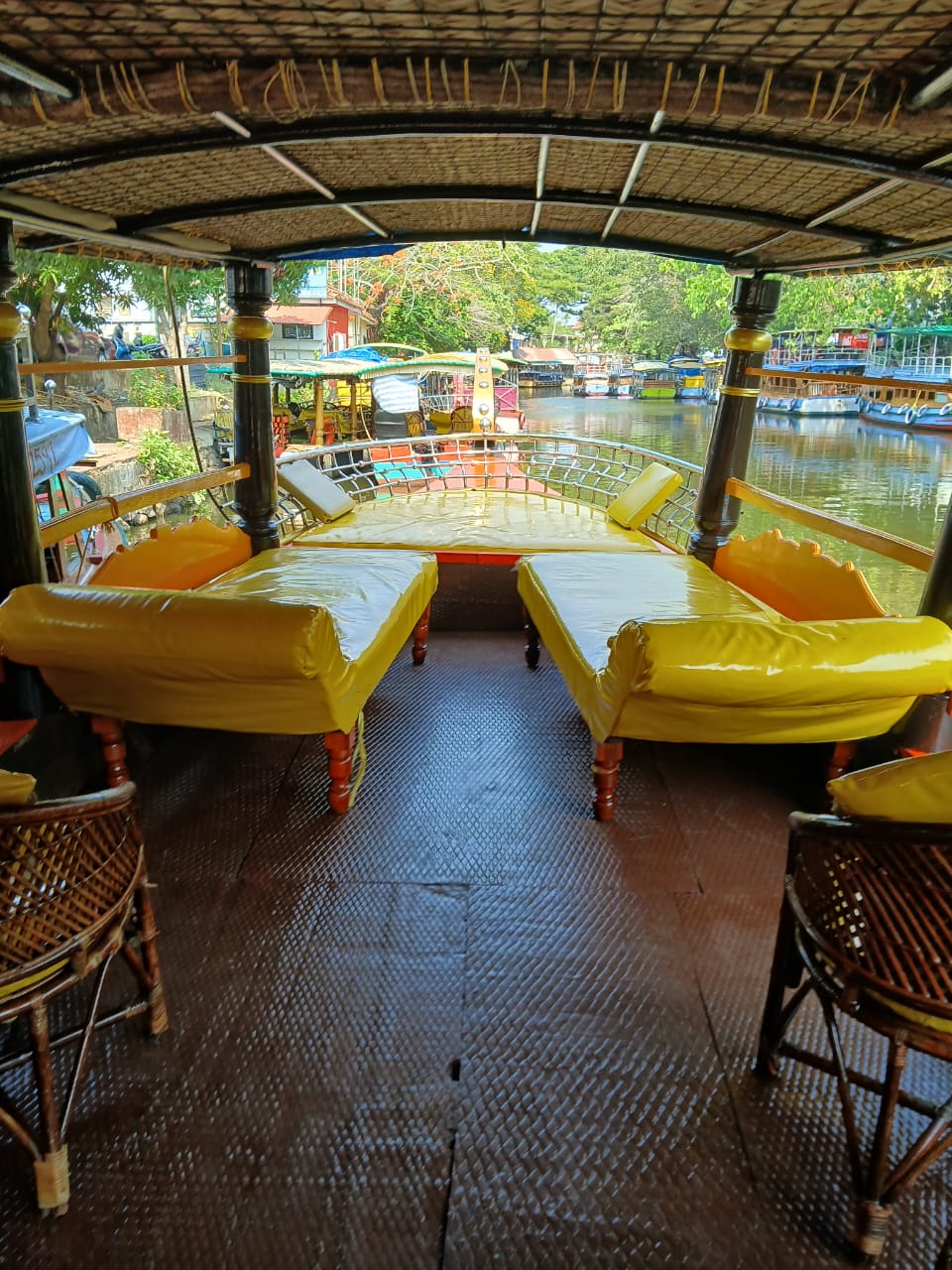Boating Alleppey
Boating Alleppey, Boat Jetty, Near Jose Alukkas Jewellery, Mullakkal, Alappuzha, 688001
Since : 2022
Boating Alleppey, Boat Jetty, Near Jose Alukkas Jewellery, Mullakkal, Alappuzha, 688001
Since : 2022
Alappuzha, known for its picturesque backwaters, offers an incredible opportunity for adventure enthusiasts and nature lovers alike. Kayaking in Alappuzha allows you to experience the pristine beauty of Kerala’s waterways up close, navigating through narrow canals, lush greenery, and tranquil surroundings. Whether you’re an experienced kayaker or a first-timer, this water sport is a perfect way to explore the serene landscapes of Kerala's backwaters at your own pace.
Kayaking in Alappuzha provides a unique experience that is different from traditional boat rides or houseboat tours. It allows you to venture into the smaller canals, observe local village life, and engage with the natural environment in a way that other forms of travel simply can't. The calm waters and breathtaking views make kayaking a thrilling yet peaceful way to immerse yourself in the beauty of the backwaters.
· Boating Alleppey
Address: Boat Jetty, Near Jose Alukkas Jewellery, Mullakkal, Alappuzha, 688001
· SKA Houseboats
Address: Kayal Kurishady, Near Hotel Ramada, Finishing Point, Alappuzha, 688013
· Maidhili Houseboats & Travels
Address: AC Road, Near Pallathuruthy Bridge, Pallathuruthy, Alappuzha, 688014
· White Rose Houseboats
Address: Pulimoottil Trade Center, Ammankovil Street, Near Mullakkal Temple, Mullakkal, Alappuzha, 688011
· Pickadly Houseboat
Address: Valamparambil, Finishing Point Punnamada Road, Opp. Achayan Parking, Thathampally, Alappuzha, 688006
· Relax in Kerala Houseboat
Address: Ivaansh Building, Chungam, Near Pallathuruthy Outpost, Pallathuruthy, Alappuzha, 688011
· Punnamada Backwater Resort
Address: Punnamada Lake, Near Thathampally, Alappuzha, 688013
· Vembanadu Lake Resort
Address: Kuttanadu, Near Kuttanadu Boat Jetty, Alappuzha, 688529
· Aquatic Heritage Houseboats
Address: Kuttanadu, Punnappra, Alappuzha, 688532
· Lakes & Lagoons
Address: Finishing Point, Alappuzha, 688013
Kayaking involves paddling a small, narrow watercraft called a kayak, using a double-bladed paddle. Kayaks come in various designs, including sit-in and sit-on-top models, and are used for different purposes such as touring, whitewater, and recreational paddling. Canoeing, on the other hand, involves paddling a slightly larger open boat called a canoe, using a single-bladed paddle. Canoes are often used for leisurely paddling and can carry more people and gear compared to kayaks.
Different customers have different preferences and skill levels. Offering customized tours and packages caters to a wider audience. Beginners may prefer short, guided tours with basic instructions, while experienced paddlers might opt for longer, more challenging routes. Family-friendly packages, romantic sunset paddles, and eco-tours focusing on local flora and fauna can also enhance the appeal of kayaking and canoeing.
Is rich in cultural heritage and biodiversity. Customers expect their kayaking and canoeing adventures to include opportunities for cultural and wildlife exploration. This could involve visits to local villages, interaction with residents, observing traditional fishing techniques, and spotting various bird species, otters, and other wildlife native to the region.
What's the difference between kayaking and canoeing?
Kayaks are typically closed-decked boats where the paddler sits with their legs extended. Canoes, on the other hand, are open boats where paddlers kneel or sit on a raised seat.
Is kayaking or canoeing harder?
Both activities have their challenges. Kayaking might require more upper body strength and technique for maneuverability, while canoeing can require better balance and coordination due to its open design.
What gear do I need for kayaking or canoeing?
Essential gear includes a paddle suitable for the type of water you'll be on, a personal flotation device (PFD), appropriate clothing for the weather and water conditions, and possibly a spray skirt for kayaking to keep water out of the cockpit.
Are kayaking and canoeing safe for beginners?
Yes, both activities are generally safe for beginners when proper safety precautions are followed. It's advisable to start in calm waters and with basic instruction or guidance from experienced paddlers.
What are the health benefits of kayaking and canoeing?
They provide excellent cardiovascular exercise, strengthen muscles (especially in the arms, shoulders, and core), and can be relaxing and stress-reducing due to the connection with nature and water.
Can children participate in kayaking or canoeing?
Yes, there are kayaks and canoes designed specifically for children, and it's a great activity for families. Children should always wear a PFD and be accompanied by adults in suitable conditions.
Do I need lessons to kayak or canoe?
While lessons aren't always necessary, they can greatly enhance your enjoyment and safety, especially for beginners. Learning basic paddling techniques and safety practices can make your experience more enjoyable.
What types of water are suitable for kayaking and canoeing?
Both activities can be done on various types of water, including lakes, rivers, and coastal waters. The suitability depends on your skill level, equipment, and weather conditions.
How do I choose between a kayak and a canoe?
Your choice depends on factors like your preferred paddling style, the type of water you'll be on, and whether you prefer sitting lower (canoe) or higher (kayak). Trying both can help you decide which feels more comfortable.
Are there any environmental considerations when kayaking or canoeing?
Yes, it's important to minimize your impact by following Leave No Trace principles, respecting wildlife and vegetation, and avoiding areas with sensitive ecosystems.

Alappuzha, Mullakkal

Alappuzha, Mullakkal